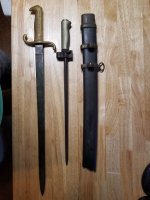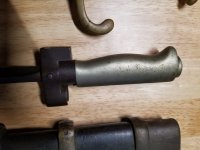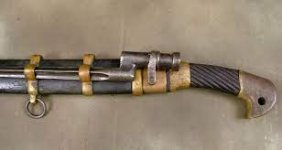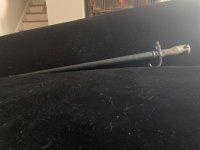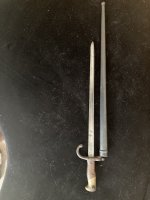Hi All,
Please help me to identify a new acquisition. I am trying to narrow down the country of origin, the approximate year of manufacture, and what unit it was carried by.
It is a Short Sword in a Wooden Scabbard with a Bayonet held by Clamped Brackets attached to the Scabbard.
SHORT SWORD
Blade is straight with pointed tip.
Length of the blade is 480 mm long (approx 18.75")
Blade width at the hilt is 24mm wide.
Hilt is 120mm long.
Overall sword length 600mm.
Blade is etched on both sides and has a crown in the etching.
S-Cross Guard is brass (no markings).
Birdhead-style Pommel
Hilt is Brass, left side smooth, right side 19 oblique grooves
Has Single Edge which is dull, does not appear to me to have ever been sharpened.
BAYONET
M1886 Lebel bayonet With Shortened Cruciform blade.
Hilt/Grips are either Nickel silver or aluminium bronze hilt without quillion.
Blade Length is 340mm
Blade Thickness is 13mm
Overall Length 460mm
SCABBARD
Scabbard is wood which appears to be covered in a coated fabric finish.
Locket is Brass
Chape has been broken off (I do not have it)
There are three brackets.
Bracket 1 is screwed into the Locket and appears to be for attaching a Baldric.
Bracket 2 and 3 are screwed on in a clamp style.
Brackets 2 and 3 are specifically for holding the M1886 Bayonet to the Scabbard.
Bracket 2 has the number 0147 stamped into it.
Bracket 3 has a brass ring attached.
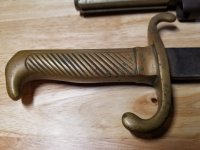
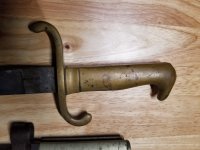
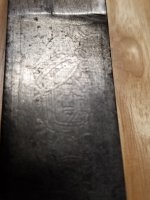
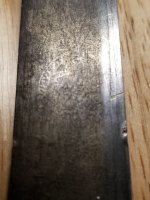
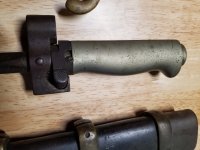
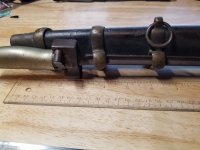
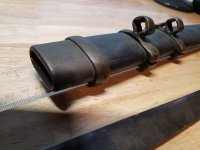
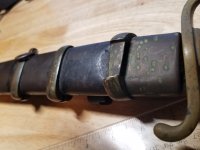
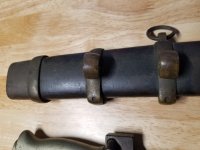
Please help me to identify a new acquisition. I am trying to narrow down the country of origin, the approximate year of manufacture, and what unit it was carried by.
It is a Short Sword in a Wooden Scabbard with a Bayonet held by Clamped Brackets attached to the Scabbard.
SHORT SWORD
Blade is straight with pointed tip.
Length of the blade is 480 mm long (approx 18.75")
Blade width at the hilt is 24mm wide.
Hilt is 120mm long.
Overall sword length 600mm.
Blade is etched on both sides and has a crown in the etching.
S-Cross Guard is brass (no markings).
Birdhead-style Pommel
Hilt is Brass, left side smooth, right side 19 oblique grooves
Has Single Edge which is dull, does not appear to me to have ever been sharpened.
BAYONET
M1886 Lebel bayonet With Shortened Cruciform blade.
Hilt/Grips are either Nickel silver or aluminium bronze hilt without quillion.
Blade Length is 340mm
Blade Thickness is 13mm
Overall Length 460mm
SCABBARD
Scabbard is wood which appears to be covered in a coated fabric finish.
Locket is Brass
Chape has been broken off (I do not have it)
There are three brackets.
Bracket 1 is screwed into the Locket and appears to be for attaching a Baldric.
Bracket 2 and 3 are screwed on in a clamp style.
Brackets 2 and 3 are specifically for holding the M1886 Bayonet to the Scabbard.
Bracket 2 has the number 0147 stamped into it.
Bracket 3 has a brass ring attached.










